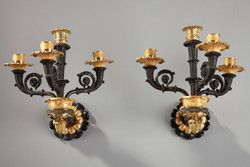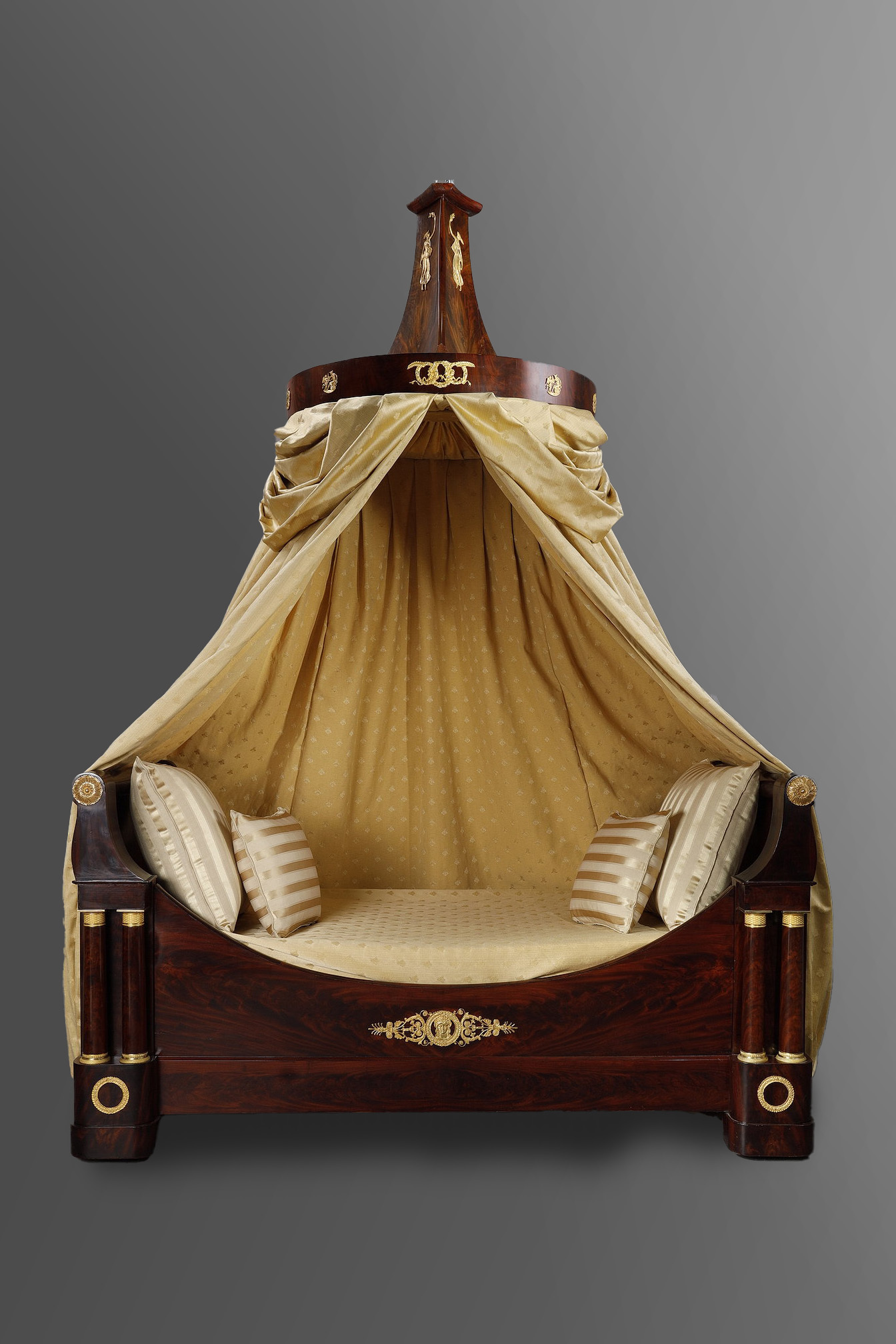The Restoration style (1815-1830)
19.10.14
After Napoleon's defeat at Waterloo on June 18, 1815, power was taken over in France by the two brothers of Louis XVI: the Count of Provence, who would reign under the name of Louis XVIII (1815-1823) , then the Count of Artois, known as Charles X , who would govern until 1830, when he was overthrown by the July Revolution, and replaced by a new king, Louis-Philippe I (1830-1848).
This period, known as the Restoration (1815-1830), was initially a reaction against the pomp and circumstance of the Empire. It brought an elegance and refinement to furnishings and decoration that Napoleon's taste for grandeur and splendor had, in a way, obscured. However, under the Restoration, it was no longer the royal family's commissions or those of wealthy aristocrats that dictated the style. Fashion now adapted to the needs and tastes of the new bourgeois society , which rented more or less luxurious apartments in Paris, suitable for family life.
Restoration Bed and its Canopy Bed
Regency-style furniture , particularly chests of drawers, was imported from England. Mahogany, considered too heavy, was replaced by lighter woods. Imposing furniture, adorned with bronze, gave way to smaller pieces, finely carved or inlaid. As during the Regency a century earlier, the vast halls of official palaces were abandoned in favor of rediscovering the charm of the intimacy of small drawing rooms and boudoirs.
But this change of style did not call into question certain essential elements of the decor, which remained deeply inspired by the previous era. Thus, the Restoration continued the neoclassical tradition cherished by Napoleon I and brought it to an unprecedented degree of refinement.
At the same time, Romanticism sought its inspiration in an Middle Ages which mixed classical decorative ornamentation with rosettes, festoons and ogives of Gothic cathedrals, in vogue under Charles X.
 Gothic-decorated vase by Jean-Baptiste Desvignes
Gothic-decorated vase by Jean-Baptiste Desvignes
Furniture, materials and techniques
Restoration furniture exudes an elegant harmony: it is graceful, comfortable, light, and easy to handle. Generally, it retains the simple, gently curved forms of the Empire style. However, the structure softens, the dimensions are reduced to suit smaller interiors, and curves increasingly appear in the form of scrolls, arabesques, scrolled armrests, and saber legs.
Restoration period furniture consists of pieces considered essential: chests of drawers to facilitate storage, large round tables for the dining room, flat desks or secretaries, wardrobes and sometimes dressing tables in the bedroom.
In the drawing room, the chaise longue, popularized during the Empire period, remains in use. Small tables and pedestal tables with marble tops are placed near various types of comfortable seating, including gondola armchairs . The chairs reflect this style, featuring backs carved with Gothic tracery, flanked by uprights that terminate in pinnacles inspired by the stone spires of cathedrals. To the stylistic elements of medieval monuments and furniture are sometimes added Renaissance motifs.
The craftsmen of this era employed the techniques of wood veneer, solid wood, and inlay with equal skill.
Restoration furniture is characterized by the use of light woods (elm, ash, speckled beech, sycamore, amber maple, lemonwood, orangewood) inlaid with dark woods (mahogany, rosewood, and amaranth). More rarely, and mainly during the reign of Charles X, dark woods are inlaid with light woods, particularly sycamore or lemonwood inlays.
The inlaid motifs created by the carpenters and cabinetmakers of this period are of exceptional quality and finesse. The decorations of fillets, rosettes, stylized palmettes, flowering branches, and scrolls are executed with exquisite precision, resembling true goldsmithing. They serve the same decorative purpose as the gilded bronzes that adorn Empire furniture, which were also used as a source of inspiration.
Ornamentation
The ornamentation, light and very refined, emphasizes the structure of the furniture. Molding, abandoned during the Empire period, reappears delicately on consoles, secretaries, tables, and imposing pieces such as bookcases.
Some decorative motifs from the Empire style remain, but in a simplified form. Among the most frequently used are the palmette—rounder, smaller, and stylized—the cornucopia, the lyre, the swan, the star, and dolphins. Less commonly, one finds chimeras, griffins, and sea horses. However, Restoration motifs differ from Empire motifs in their execution, which is much lighter and less solemn than in the preceding period.
Classic motifs include egg-and-dart patterns, rows of pearls, foliage scrolls, gadroons, small flowers in garlands or bouquets, ribbons, and flower crowns.
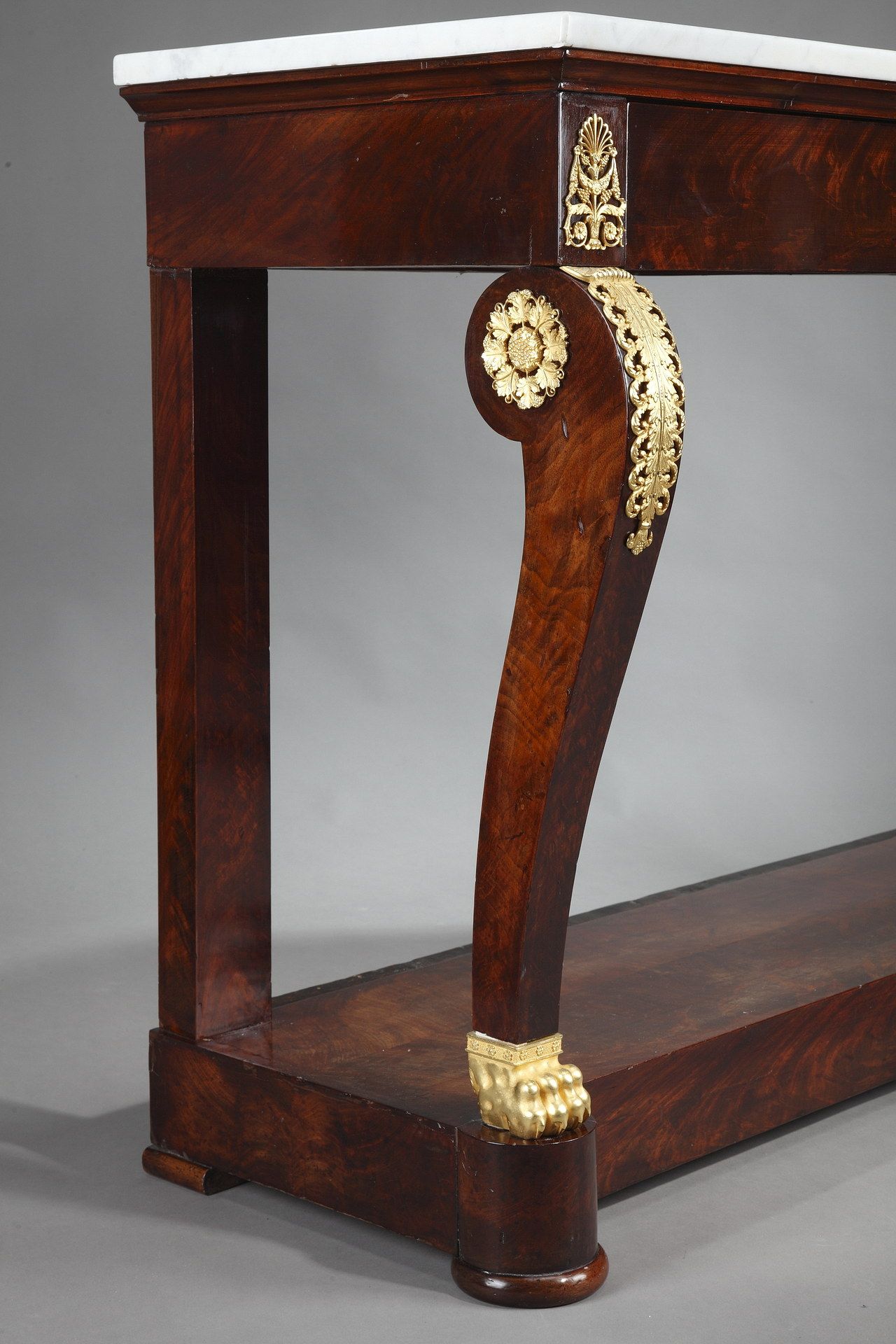 Restoration period console table decorated with lion's paws and palmettes (details)
Restoration period console table decorated with lion's paws and palmettes (details)
In addition to the allegorical and antique (Cupids, Psyches, Adonises, columns, coins, straight cornices) inherited from the previous era, Gothic motifs pervaded furniture and objects, constituting the novelty of this period. Everyday objects, from the most modest to the most luxurious, known as "cathedral" or "troubadour" style items, such as vases, clocks, candlesticks, inkwells, flasks, and caskets, became adorned with details inspired by window frames, rose windows, flying buttresses, arcades, festoons, dentils, and stone pinnacles. Under Charles X, the "Gothic" taste was the first reaction against the omnipresent antique style defined by Percier and Fontaine at the beginning of the 19th century.
The Restoration Glassworks
One sector that experienced a golden age in the mid-1820s was glassmaking. The reign of Charles X is credited with producing the finest and most sumptuous cut crystal. Indeed, the years 1815-1830 represent a true golden age of glass in France , whose renown was international thanks to the exceptional productions of the Baccarat, Creusot, Choisy-le-Roi, and Bercy crystalworks.
Objects made of molded or diamond-cut crystal , remarkable for their quality, are mounted in silver or gilt bronze, very finely chased with dolphins, swans, or cornucopias. Often, rams' heads or coiled serpents form the handles.
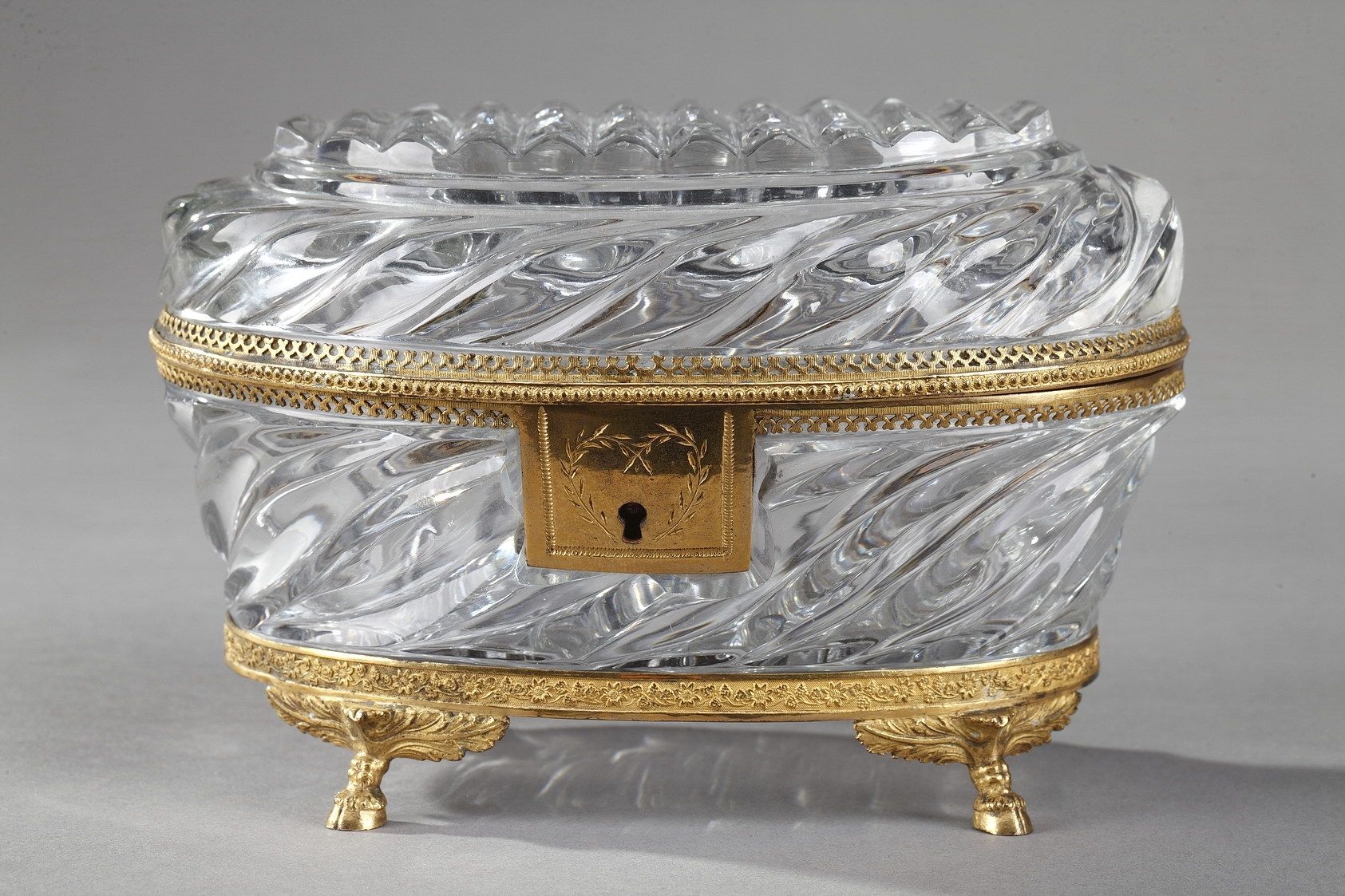 Cut crystal jewelry box with bronze mount, Charles X period
Cut crystal jewelry box with bronze mount, Charles X period
After 1814, forms, no longer dictated by the Court and therefore no longer obeying a precise aesthetic program, were inspired by the newly enriched classes who imposed their taste on fashionable objects such as opal-colored glasses .
Opaline glass is used to make boxes, bottles, and vases. Around 1820, technological advances in the glass industry marked a turning point in the history of opaline glass, leading to the emergence of new shapes and decorations. It was during this period that so-called "cornet" vases, round bottles with ball stoppers , bowls, candy dishes, scented wine cellars, and other novelty items appeared. The bronze mounts were finely chased with motifs common to most of the Restoration and Empire periods, such as dolphins, swans, doves, or drinking birds.
Pair of opaline vases with Desvignes decoration
In this context, Jean-Baptiste Desvignes (1786-1826) , a painter and gilder specializing in glass, crystal, and porcelain, found a way to paint on opaline glass. He used gold or silver leaf and only plant-based pigments, which he adhered to the opal crystal. Matte tones were limited to dark blue and red. Gilding predominated, appearing in the form of delicate, light-colored motifs such as palmettes, florets, and garlands. On some chests and cups, Desvignes applied "Gothic" decorations. He also created small illustrative scenes inspired by La Fontaine's fables, in delicately muted hues of blue, soft green, ochre, and mauve, with touches of gold or silver.
Overlay glass bottles also enjoyed great success during the reign of Charles X. This decorative technique involves layering the crystal with a layer of white or colored enamel. It was discovered by the Englishman Joseph Prince of Durham, who filed his patent in 1814. Formed from two layers of glass, either semi-crystal or crystal in different colors, the decoration is created using two different methods, corresponding to either an internal or external overlay. In most cases, the external layer is made of white or colored enamel. The overlay requires cut decoration. By revealing the internal layer, the cutter begins to cut into the external layer and creates various designs such as pontil marks, hollow ribs, checkerboard patterns, stars, or cords. France quickly adopted this technique. From 1828, the Bercy crystal factory produced overlay opaline glass, followed some time later by the Choisy-le-Roi factory. Around 1839, Baccarat began producing double-layered pieces. In 1844, Saint-Louis also produced double-layered and even triple-layered objects.
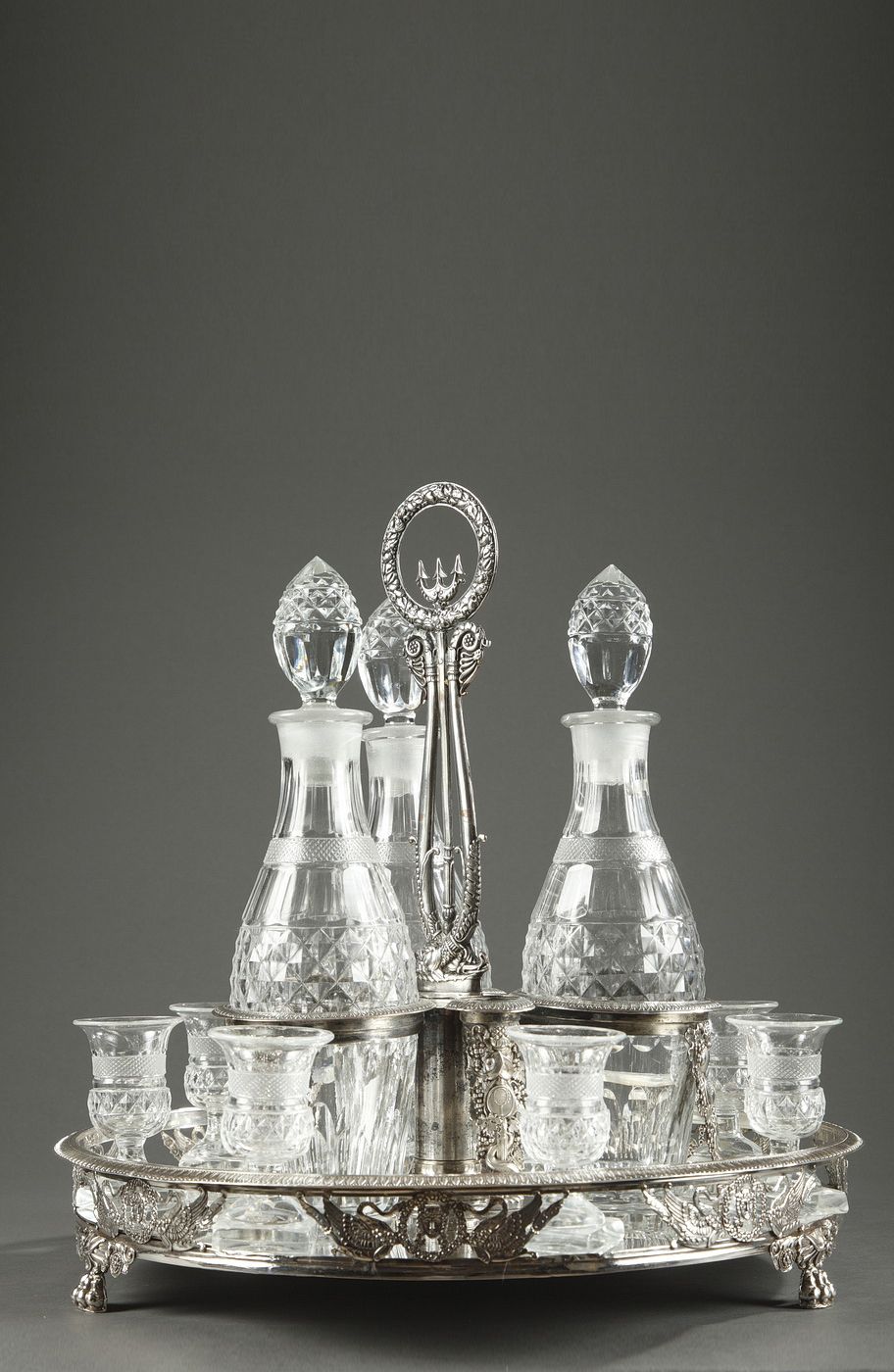
Crystal liqueur service, Charles X period
The opal glass and crystal from the Restoration period remain incomparable in the simplicity and purity of their forms, the delicacy of their nuances, and the fineness of their chiseling, which became increasingly rare after the time of Charles X.

